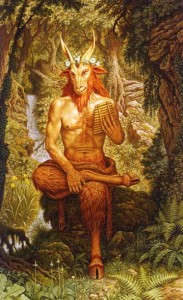
How Long Is Too Long to Suffer From Back Pain?
What’s more, the cause of your lower back pain may be more complicated than the actual twisting or lifting that brought it on in the first place — and preventing future pain means getting to the source of what caused it.
“If you wait to do something about lower back pain until it’s become debilitating, you’ve waited too long,” says Dr. Hosun Hwang, spine specialist at Houston Methodist Willowbrook Hospital. “Most people’s back pain dissipates in about a week or two, but if your pain is long-term or chronic, it’s time to see a spine specialist.”
What causes back pain?
Lower back pain may feel like aching, burning or sharp or dull pain that fluctuates in intensity from mild to severe. It can be due to a sports injury, from twisting or lifting something heavy or from working in your yard.
Dr. Hwang says back pain can happen to anyone, but some factors can increase your risk, including:
- Age – older adults may be more susceptible to osteoarthritis and disc deterioration
- Occupation – employees in jobs requiring repetitive bending, heavy lifting or long periods of standing or sitting are more likely to suffer back pain. Prevent this with the Best gaming chairs.
- Weight – excess weight adds stress to the spine and back muscles
- Activity level – having a sedentary lifestyle, as well as weak back muscles and lack of core strength, make it easier to injure your back
- Smoking habits – smoking decreases blood flow, reduces your body’s ability to heal and increases the risk of osteoporosis
“Chronic back pain may be caused by a variety of underlying conditions,” explains Dr. Hwang. “From spinal arthritis to sciatica to herniated discs, a spine specialist has the expertise needed to pinpoint the cause of your chronic back pain and develop a treatment plan that may resolve the issue or at least improve your quality of life.”
When to see a spine specialist for chronic back pain
Sometimes back pain comes on quick, and you know exactly what caused it. After some stretching, resting and pain relievers, you’ll remember to bend with your knees next time.
But, other times, people experiencing back pain are often left thinking: I don’t even remember when the pain started or what I did to cause it. The reality is that the source of you back pain may not always be evident — which can also make it hard to know when it’s time to see an expert.
Dr. Hwang says the following five signs likely indicate that it’s time to see a spine specialist for your back pain:
1. Your pain is severe. While some back pain is only mild to moderate, severe back pain is when your pain is constant, intense or gets worse when you’re resting or at night.
2. Your pain is persistent. If your back pain lasts longer than three months, it’s considered chronic and may require a tailored treatment plan.
3. Your pain isn’t isolated to your back. If your pain is traveling down your leg, you have numbness or weakness in your hips or legs, or you’re experiencing tingling in your legs and feet, it may be a sign that there’s pressure on your spine.
4. Everyday activities have become difficult. If your back pain is already affecting routine activities, don’t let it get so debilitating that it keeps you from doing things you enjoy.
5. You have other symptoms that are concerning. While rare, back pain is sometimes a sign of a serious medical condition, such as a spinal infection or spinal tumor. If your back pain is accompanied by fever, unexplained weight loss or bowel or urinary problems, tell your doctor.
If you’re experiencing any of these signs, a spine specialist can investigate the underlying cause of your back pain through imaging tests, such as X-ray, CT, MRI or myelogram. A myelogram uses contrast dye injected into the spinal canal with a CT scan to evaluate the spine. Or, your specialist may recommend an electromyography (EMG) — a test of your muscles and nerves.
“There are several ways to treat chronic back pain, including medications, physical therapy, injections and surgery — with the best treatment option usually depending on the cause and severity of your pain,” says Dr. Hwang. “We always start by using the least invasive, most effective treatment first. However, surgery may be necessary in some cases.”
Regardless of what’s causing your back pain, a spine specialist has the expertise needed to design a targeted treatment plan aimed at resolving your lower back pain and improving your quality of life.
 In 2002 the book
In 2002 the book

